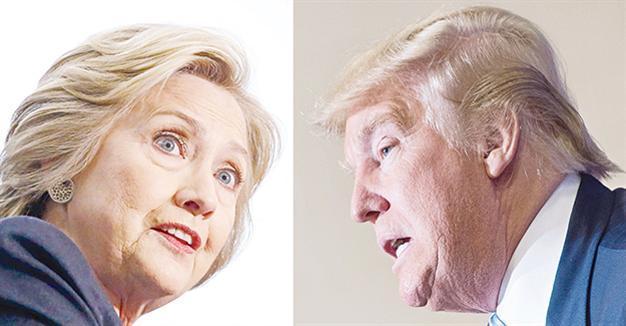US voters’ main motivation is blocking the other candidate: Polls
NEW YORK – Reuters
 The U.S. presidential election may turn out to be one of the world’s biggest un-popularity contests.
The U.S. presidential election may turn out to be one of the world’s biggest un-popularity contests. Nearly half of American voters who support either Democrat Hillary Clinton or Republican Donald Trump for the White House said they will mainly be trying to block the other side from winning, according to a Reuters/Ipsos poll released May 5.
The results reflect a deepening ideological divide in the United States, where people are becoming increasingly fearful of the opposing party, a feeling worsened by the likely matchup between the New York real estate tycoon and the former first lady, said Larry Sabato, director of the University of Virginia’s Center for Politics.
“This phenomenon is called negative partisanship,” Sabato said. “If we were trying to maximize the effect, we couldn’t have found better nominees than Trump and Clinton.”
Trump has won passionate supporters and vitriolic detractors for his blunt talk and hardline proposals, including his call for a ban on Muslims entering the United States, his vow to force Mexico to pay for a border wall, and his promise to renegotiate international trade deals.
Former Secretary of State Clinton’s appeal to voters seeking continuity with U.S. President Barack Obama’s policies, has won her a decisive lead in the race for the Democratic presidential nomination, but finds strong opponents among those disillusioned by what they see as lack of progress during Obama’s tenure.
The poll asked likely voters about the primary motivation driving their support of either Trump or Clinton heading into the general election on Nov. 8.
About 47 percent of Trump supporters said they backed him primarily because they do not want Clinton to win. Another 43 percent said their primary motivation was a liking for Trump’s political positions, while 6 percent said they liked him personally.
Similar responses prevailed among Clinton supporters.
About 46 percent said they would vote for her mostly because they do not want to see a Trump presidency, while 40 percent said they agreed with her political positions, and 11 percent said they liked her personally.
The April 29-May 5 poll included 469 likely Trump voters and 599 likely Clinton voters. It has a credibility interval of 5 percentage points.
To be sure, voters’ opinions could change over the next several months. Candidates will be feted at party conventions, will square off in a series of national debates, and will be targeted by millions of dollars’ worth of advertisements.
But the negative atmosphere is likely to reign, says Alan Abramowitz, an Emory University professor who has studied the rise of negative partisanship in America.
Both campaigns probably will decide their best strategy is to work even harder to vilify each other, he said.
“It’s going to get very, very negative,” he added.
That would play into a longer-term trend.
A 2014 study by Pew Research Center found that Democrats and Republicans have shown increasingly negative views toward each other over the past few decades. In 2014 more than a quarter of Democrats, and more than a third of Republicans, viewed the opposition as “a threat to the nation’s well-being.”
















